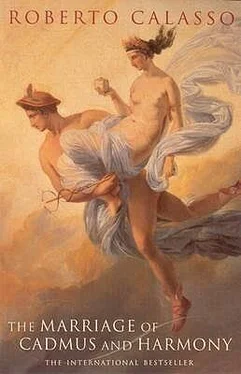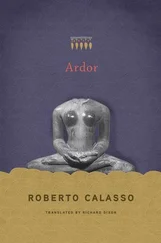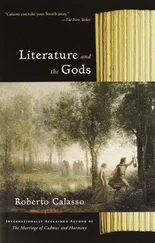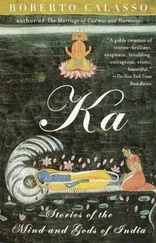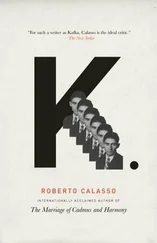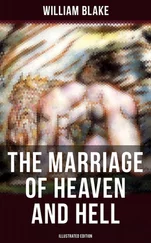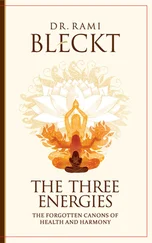Roberto Calasso - The Marriage of Cadmus and Harmony
Здесь есть возможность читать онлайн «Roberto Calasso - The Marriage of Cadmus and Harmony» весь текст электронной книги совершенно бесплатно (целиком полную версию без сокращений). В некоторых случаях можно слушать аудио, скачать через торрент в формате fb2 и присутствует краткое содержание. Год выпуска: 1993, Издательство: Alfred A. Knopf Inc, Жанр: Современная проза, на английском языке. Описание произведения, (предисловие) а так же отзывы посетителей доступны на портале библиотеки ЛибКат.
- Название:The Marriage of Cadmus and Harmony
- Автор:
- Издательство:Alfred A. Knopf Inc
- Жанр:
- Год:1993
- ISBN:нет данных
- Рейтинг книги:3 / 5. Голосов: 1
-
Избранное:Добавить в избранное
- Отзывы:
-
Ваша оценка:
- 60
- 1
- 2
- 3
- 4
- 5
The Marriage of Cadmus and Harmony: краткое содержание, описание и аннотация
Предлагаем к чтению аннотацию, описание, краткое содержание или предисловие (зависит от того, что написал сам автор книги «The Marriage of Cadmus and Harmony»). Если вы не нашли необходимую информацию о книге — напишите в комментариях, мы постараемся отыскать её.
The Marriage of Cadmus and Harmony — читать онлайн бесплатно полную книгу (весь текст) целиком
Ниже представлен текст книги, разбитый по страницам. Система сохранения места последней прочитанной страницы, позволяет с удобством читать онлайн бесплатно книгу «The Marriage of Cadmus and Harmony», без необходимости каждый раз заново искать на чём Вы остановились. Поставьте закладку, и сможете в любой момент перейти на страницу, на которой закончили чтение.
Интервал:
Закладка:
Enough of that then, Aphrodite thought, since nobody’s interested. Still, she wanted to show how efficient she could be this time. She caught up with Eros in Zeus’s orchard. The “ineffable rascal,” áphaton kakón , was playing dice with Ganymede, cheating and winning. Aphrodite knew that nothing grabbed his attention better than certain types of toys: golden dice, spinning tops, balls. This time she would bribe him with something that had been Zeus’s, something his nurse Adrasteia, one of the women of fate, had given him: a golden ball, with lots of circles etched into it and an enamel spiral that cut across them. When you threw it up in the air, it left a flaming wake. Describing the toy to Eros, she immediately saw that the boy would agree to the deal: the golden ball in return for an arrow in Medea’s heart, right up to the feathers if possible. So Eros, the perennial, ruthless youthfulness of the world, he who strikes but is never stricken, once again came down from Olympus. He was already thinking of when he got back, of playing with the golden ball, crossed by that deep enamel spiral.
There is a misunderstanding between hero and princess that will go on and on repeating itself in relationships between men and women, at least for as long as the man thinks of himself as the hero and the woman as the princess, which is to say almost always. The night Jason turned up at the court in Colchis, Princess Medea dreamed that the hero had come not to kill the monster but to carry her off. Jason knew that, to beat the monster guarding the Golden Fleece, he must get Medea’s help. And, if the princess helped him, she would be carried off. It was a game of silences, of things understood but unspoken: both hero and princess wanted to make it look, he to her and she to herself, as if the slaying of the monster were only a pretext for her being carried off.
When Jason had taken the Golden Fleece and the Argo was sailing off toward Greece with Medea on board, it seemed as though the princess’s dream had come true. Right from the beginning Medea had thought of Jason as a nocturnal vision, when “creeping like a dream, her mind followed his marching footsteps.” So who remembered the monster now? But for the hero there is never just the one monster. Hence it cannot be forgotten. For every monster is the forerunner of the next. It is far more likely that it will be the princess who is forgotten. The identity of the monster is diffuse, it reappears and repeats itself in every fragment of monster; but each woman is a profile, and at any moment a new profile may blot out the earlier ones. So it is that stories of heroes and princesses tend to end badly. Perhaps in this regard, as in others, Theseus was the most clear-sighted and tactful of the heroes; at least he abandoned Ariadne on an island, before arriving home.
Gifts from the gods are poisoned, stamped with the ill-omened sign of the invisible become palpable. Passing from hand to hand, they ooze poison. Aphrodite’s necklace and Athena’s golden tunic, both given to Harmony on the occasion of her marriage to Cadmus, lead to a slaughter of heroes that will go on for two generations, from the expedition of the Seven against Thebes to the revenge killings of the Epigoni. It was the same with the sacred purple tunic Dionysus fell asleep in, his head resting on Ariadne’s fair breasts. The purple was bright on the sands of Naxos. But one day that fabric, drenched with happiness as it was, would become the banner of desertion, betrayal, murder. Yet the fragrance of Dionysus never left it, and the “sweet desire” to touch and stare at that tunic would never fade. The Charites had woven it for Dionysus; Dionysus had wrapped himself in it with Ariadne. Then he gave it to his son Thoas. Thoas gave it to his daughter Hypsipyle, who gave it to her lover Jason before he abandoned her. And the purple tunic of Dionysus was the gift Jason and Medea chose for Apsyrtus, Medea’s brother, when they decided to kill him.
It all happened without witnesses, on the dark little island in the Danube estuary where the Brygi had raised a temple to Artemis. There was no other trace of a human presence. Medea waited for her brother on the temple porch. Jason crouched in the darkness. Medea looked away and covered her eyes with a white veil as Jason struck Apsyrtus with the gesture of a butcher dispatching cattle. Apsyrtus fell to his knees like a huge-headed bull. Before dying, he scooped up some black blood in his hands and managed to smear it on his sister’s white veil. Jason went around the corpse, cutting off the hands, feet, and ears. The first fruits. Three times he licked the dead man’s blood and spat it into his mouth. Medea raised a torch, the sign agreed on with her lover’s friends.
Granddaughters of the sun, it was immediately obvious that Ariadne and Medea were related. They both had a sort of golden light spreading outward from the eyes. They were born far apart, in the far south and the far north of the earth. Both helped a foreigner, were carried off by him, by him abandoned. They never met. But they touched each other through a fabric. Each had fingered that purple tunic, woven for a god and still fragrant with his vanished body.
Oistrus, the gadfly who torments the cattle, is the most elusive and at the same time the most omnipresent of the powers that governed the Greeks. Ate, that infatuation that includes its own punishment, is the equivalent figure among the women of destiny, the Fates. But Oistrus is a boy and rarely shows himself. In the sultry mythological heat their seminude bodies inhabited, gods, heroes, and the sons and daughters of gods moved about with moist, bright eyes, until a buzzing approached them from the invisible. A sting pricked them to their very souls, and thus were events unleashed. In the beginning it was difficult to tell erotic and murderous frenzies apart. Both arose from that intermittent buzzing, the incursions of that small, malicious creature. Only once, on the wonderful Canosa wine bowl, now in Munich, does Oistrus appear in all his majesty. It is a synchronic vision of the last convulsion of the tragedy of Medea. The characters are arranged on three levels. Above, as always, are a few distracted divinities: the Dioscuri are looking at each other, maybe talking quietly. Athena is seated, one arm resting on her shield, the other holding her helmet. Heracles, naked and armed, is watching her. The next level shows Creon’s palace. Creontea is lying across the throne, on her head the poisoned crown, gift of the sorceress Medea, crazed with jealousy: “ coronam ex venenis fecit auream .” Her brother, Hippotes, is running to snatch the murderous crown from her head, while Creon, her father, clutches his hair in desperation. Other people are running to help too, even an old man with a stick. And they all know there’s nothing they can do. On the lowest level we find Medea, Oriental granddaughter of the Sun. She is wearing the most sumptuous, ornate clothes, which hide everything but her beautiful, staring face and her hands, the right gripping a big sword while with the left she grabs the hair over her son’s forehead from behind. He is on tiptoe, as though dancing, on an altar stone. Another second and the sword will plunge into his naked chest. Jason bursts into the picture from the right, Jason the betrayer, the hero who has been overwhelmed. His body is tense and powerful, more so than Heracles’, an expression of furious impotence on his face. Farther to the right, and motionless, stands another Oriental figure, solemn this time. The painter of the bowl has written around his head: “phantom of Aeetes.”
The ghost of Medea’s father, who had always been against her passion for Jason, thus watches the denouement he had foreseen. Then there are two objects as well, strewn like toys on a dark background: an open box in which Medea had put the poisoned crown; a nuptial basin, knocked over, forgotten. And in the center of it all, firm and erect between Medea and Jason, a young man with long hair and a smooth chest holds a torch in each hand. He is standing on a light-wheeled chariot, driven by two long snakes, which rise in flowing spirals, turning their forked tongues toward Medea. That young man on the chariot is Oistrus, and it is he who is directing events; he is the prompter, the archon who just this once shows himself in the splendor of his person. But elsewhere, even in the element where he resides, the invisible, Oistrus is the companion of all excesses, all cravings, all the passions with which for centuries the Greeks wove their stories.
Читать дальшеИнтервал:
Закладка:
Похожие книги на «The Marriage of Cadmus and Harmony»
Представляем Вашему вниманию похожие книги на «The Marriage of Cadmus and Harmony» списком для выбора. Мы отобрали схожую по названию и смыслу литературу в надежде предоставить читателям больше вариантов отыскать новые, интересные, ещё непрочитанные произведения.
Обсуждение, отзывы о книге «The Marriage of Cadmus and Harmony» и просто собственные мнения читателей. Оставьте ваши комментарии, напишите, что Вы думаете о произведении, его смысле или главных героях. Укажите что конкретно понравилось, а что нет, и почему Вы так считаете.
